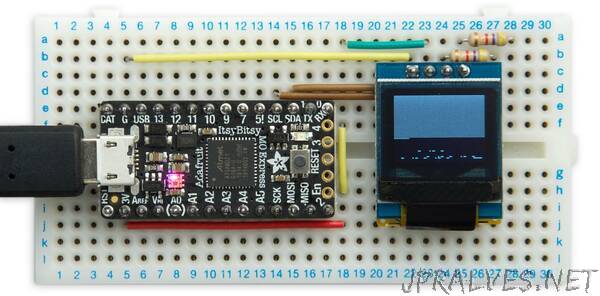
“The Visible Lisp Computer is a Lisp interpreter that displays the contents of the Lisp workspace on an OLED display, so you can see program execution and garbage collection in real time.
It’s a special version of my uLisp interpreter for ARM boards [1], designed to run on an Adafruit ItsyBitsy M0, or an ATSAMD21E on a prototyping board, interfaced to an I2C OLED display.
For example, when you evaluate a recursive function, such as the Fibonnaci function, you can see the memory being allocated to perform the calculation, and garbage collections clearing unused memory. Apart from being fun, it’s educational, giving an insight into how a language with garbage collection works.
Introduction
The Visible Lisp Computer runs on an Adafruit ItsyBitsy M0, which is an ideal ATSAMD21 board for running uLisp. It’s available from Adafruit [2], or Pimoroni in the UK [3].
The Lisp workspace is displayed on a 64x48 OLED display. This is an ideal fit, as uLisp running on an ATSAMD21 gives you a workspace of 3072 free Lisp objects (each of 8 bytes), and the 64x48 display provides 3072 pixels. I chose a low-cost monochrome I2C display, available from AliExpress [4]. The program would also work on larger SSD1306-based OLED displays, such as the widely available 128x64 ones.
Free Lisp objects are displayed in black, and when an object is in use it is displayed in white. Periodically you see the garbage collection reclaiming used objects that can no longer be accessed.”
